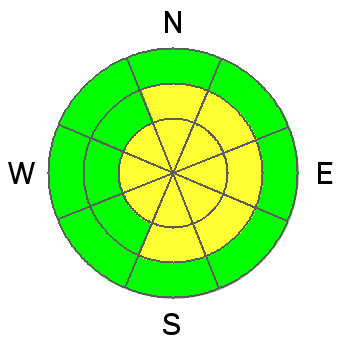Both Snowbird and Alta are closed to uphill traffic as they prepare to open. The road up Grizzly Gulch and the summer road to Catherine's Pass are open.
Discount lift tickets will be for sale to benefit the Utah Avalanche Center shortly!!! - stay tuned.
What a difference a day makes. The skies cleared, winds lost some steam, and temps warmed into the 30s at many locations. But the riding conditions? Well, even Frank Luntz would struggle to put a spin on the riding conditions after Saturday night's winds had its way with the 12-18" spread evenly across the range. Jim Harris put it well -
- "Winds last night destroyed most of the 6%-density blower that fell yesterday. "Upsidedown" and "surfy" were the catchphrases of the day. Mid-elevation, mellow-angle, wind sheltered runs that also have an old snow base were probably the place to be today, but that's a small bullseye to hit. Upper elevation glades and open slopes were wind-worked and variable ski penetration made for herky-jerky skiing on the most wind-blasted slopes. Early rise tips and fatish skis didnt keep us from getting corked in a few drifts."
Note the statement in bold italics above. This is a key, maybe THE KEY to our current conditions in particular and terrain choices in general. The only terrain that holds (barely) enough snow to slide on is the terrain that is the most susceptible for avalanching (as you'll see in Recent Activity below). If I were speaking this, I would say this last sentence again. In essence, the Bull's Eye is that your terrain choices must be determined by the avalanche hazard. Low hazard? Aim for the side of the barn. High hazard? You've got to thread the needle. Otherwise, you're rolling the dice and in the end the House Always Wins...
There were a few close calls yesterday - (place names hyperlinked to UAC Board Member Steve Achelis's Wasatch Backcountry Skiing page - try his iPhone app)
Rocky Point (Alta/Brighton periphery) - a skier triggered and and was caught and carried in a 2-3' deep and 150' wide avalanche on a steep northerly facing slope at 10,400'. He lost and recovered some gear but escaped without injury. Photo (Evelyn Lees, below)

Cardiac Bowl - another close call took place in the heart of Cardiac Bowl yesterday. It's difficult to speculate on the events as we only received info from a party in another part of the Cardiff Fork. A rough estimate of dimensions is 3' deep and 70' wide, running over 400'. Cardiac Bowl is at roughly 10,600' on a north facing slope. Photo below (Jim Harris, below)

Other avalanches ripped out in the Ogden area mountains, the Western Uintas, as well as another in Rocky Point - they all fit the pattern - steep, upper elevation northerly terrain - and you can read more about them on our Observations Page -















